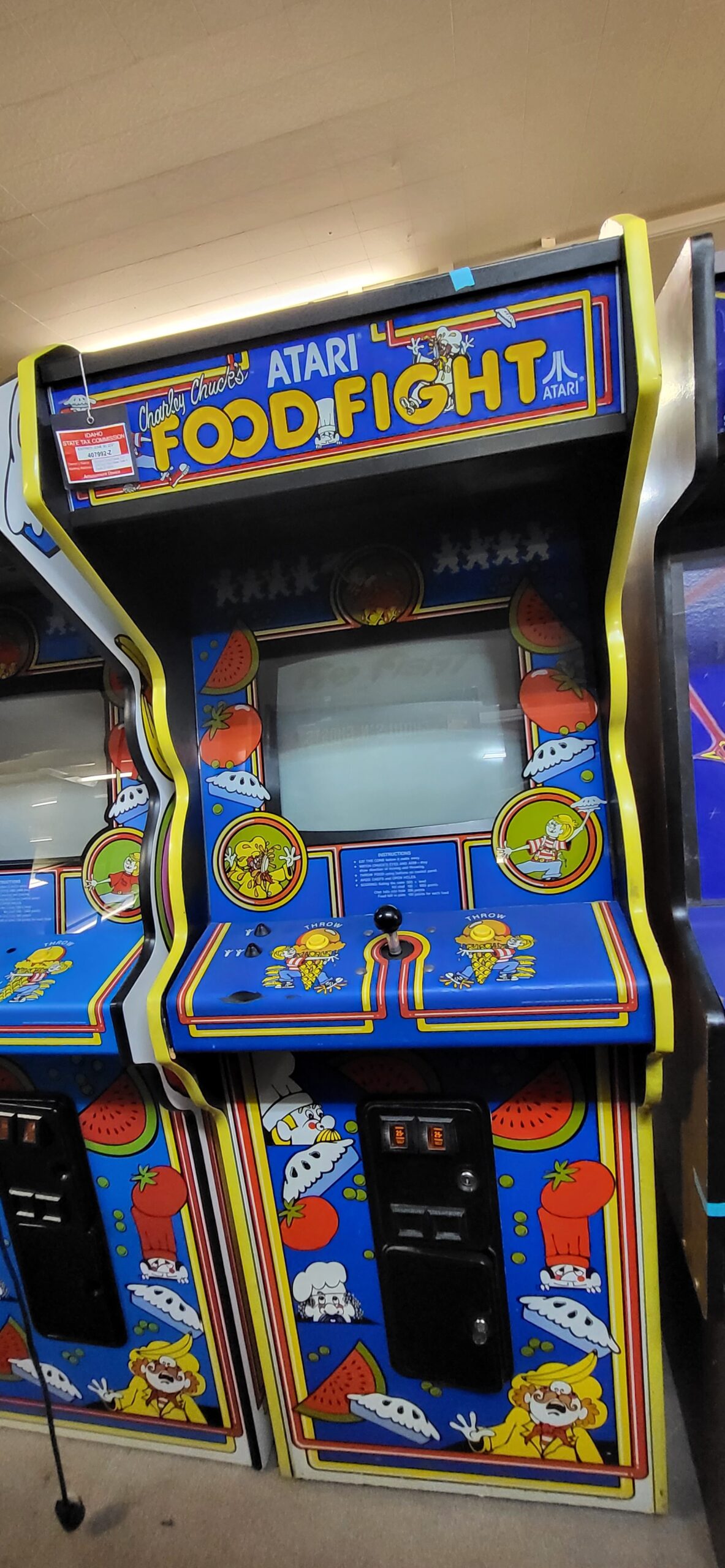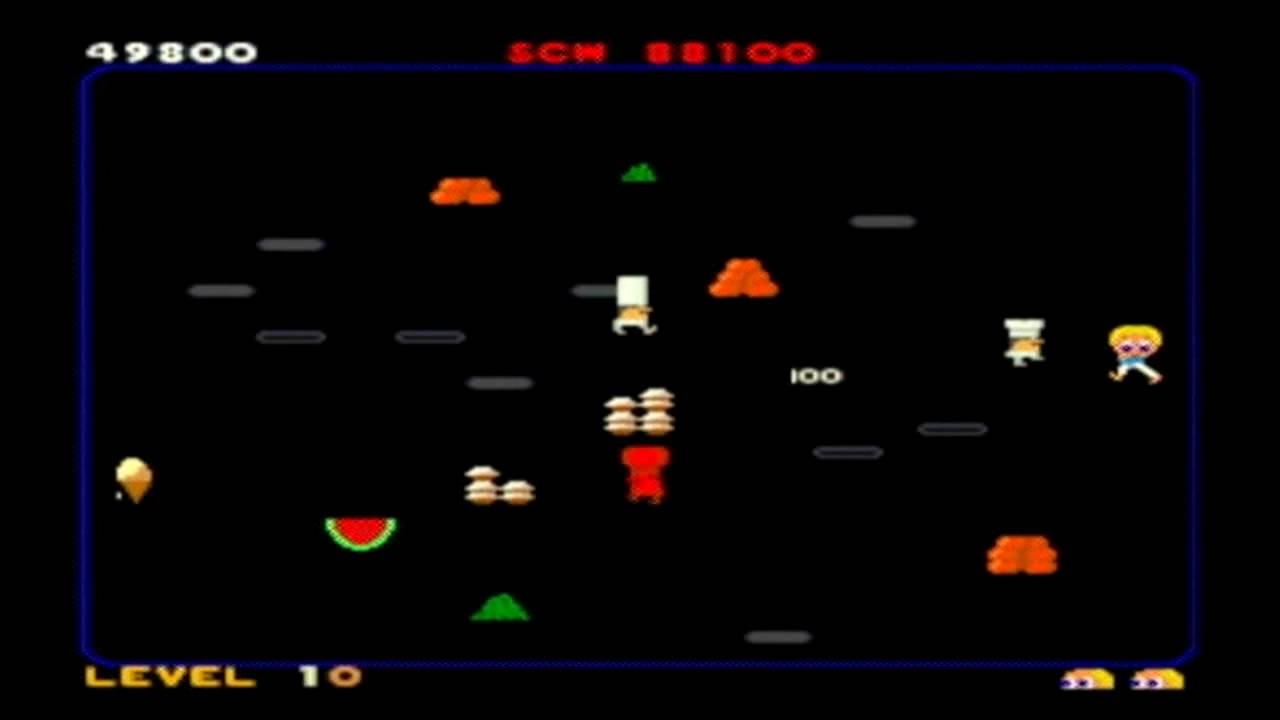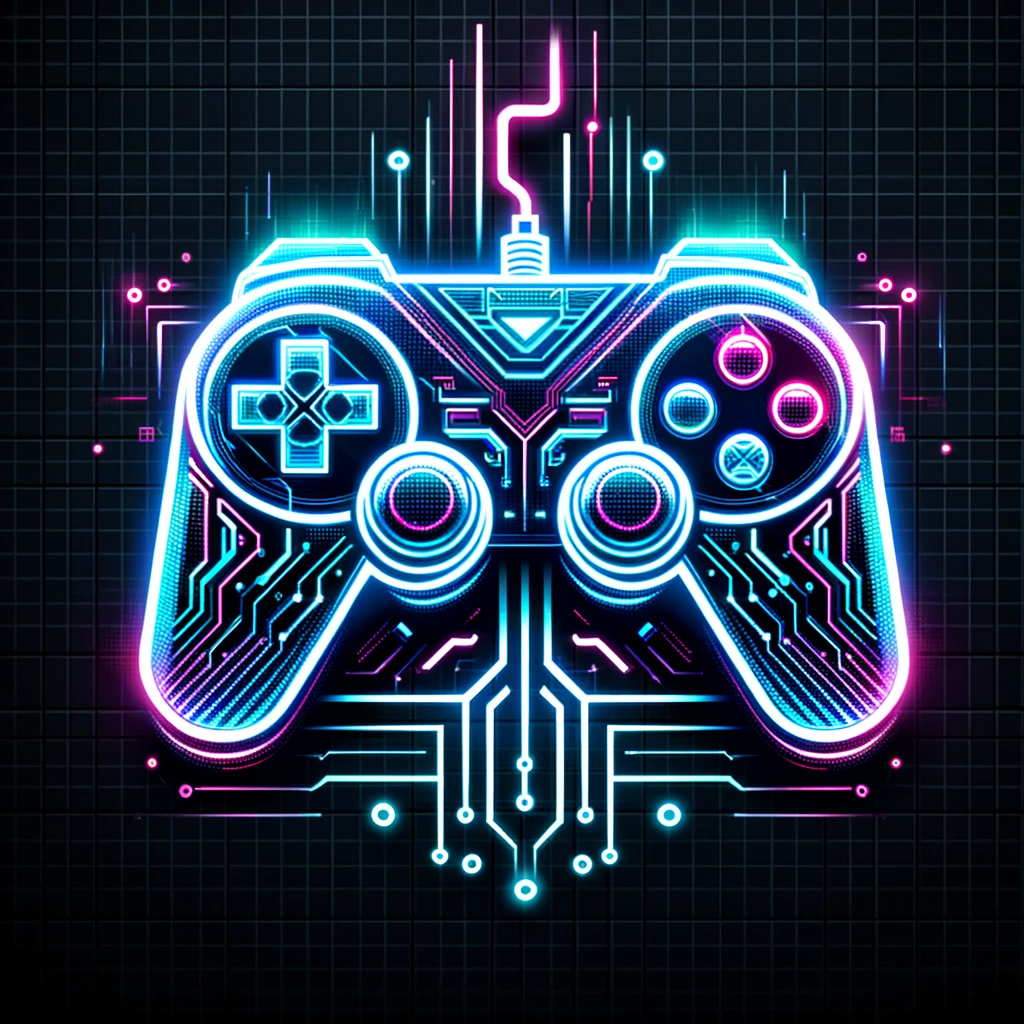
Food Fight
Arcade / Atari, Inc. 1983
“Food Fight” is a classic arcade game developed and released by Atari, Inc. in 1983. It is a maze-style action game that combines elements of strategy and reflexes. Players control a character named Charlie Chuck, whose objective is to navigate through a food-filled maze, avoiding enemy chefs while trying to consume various items of food.
The development of Food Fight began in the early 1980s, during the golden age of arcade gaming. Atari tasked General Computer Corporation (GCC) with creating the game. The concept evolved from the simple idea of navigating a character through a maze of food items. The unique gameplay mechanics, coupled with quirky graphics and sound effects, contributed to the game’s charm during its development.
Upon its release, Food Fight gained popularity for its engaging gameplay and distinctive theme. The combination of a competitive maze structure and the time-based challenge of collecting food resonated with players. Critics and gamers alike praised the game for its innovation, earning it a place among the classic titles of the era.
Food Fight exists primarily in its original arcade form, but it has seen adaptations for various home gaming consoles and computer platforms. While no direct sequels were released, the game’s influence is evident in later maze-based arcade titles. Its enduring legacy is marked by its inclusion in various retro gaming compilations.
Due to its age and limited production, finding an original Food Fight arcade cabinet can be a challenge. The game is considered rare, and its value on the collector’s market reflects this scarcity. Prices for well-preserved units can vary, with factors such as condition, completeness, and historical significance influencing the market value.
The Food Fight arcade cabinet features classic hardware typical of early 1980s arcade machines. The game runs on Atari’s System 1 hardware. Repairing or restoring a Food Fight cabinet may involve addressing issues with the monitor, control panel, power supply, and other standard components. Parts such as the joystick, buttons, and power supply can often be sourced from retro gaming communities and specialty suppliers. Detailed technical documentation and repair guides are available online for enthusiasts seeking to maintain or restore these iconic gaming cabinets.


